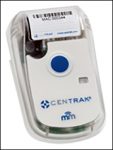
Piedmont Medical expands the use of RTLS system
[ad_1]
Piedmont Medical, Georgia’s largest healthcare system organization, is expanding the use of the RTLS system. Currently, the company has deployed in Piedmont Henry Hospital, Piedmont Fayette Hospital, Piedmont Mountainside Hospital, and Piedmont Newnan Hospital. Next year, the company will also use the RTLS system at Piedmont Newton Hospital.
This year, Piedmont Medical Group began to use RTLS technology in the specialized hospital bed rental business, saving operating costs. The solution uses CenTrak tags and access points (devices for receiving tag RF signals), Vizzia’s software platform.
Piedmont also uses wireless sensors to monitor the temperature of refrigerators and freezers. In terms of temperature management, Vizzia provided L-Com’s Point Six sensor and used the Vizzia software platform to manage sensor data.
Piedmont Atlanta is the largest and most complex hospital owned by the company. According to Steven Kelley, Piedmont’s Manager of Imaging Diagnostics, Restoration and Biomedical Engineering, the hospital has adopted a certain plan for equipment management in the past, but there are still some moments when the equipment is not available to those who need it. Nurses need to clean up dirty portable medical equipment (MMEs), such as pumps and breathing equipment. After cleaning, move the equipment to the clean room and wait for use. Since employees cannot know the location of all equipment, the company contacted Vizzia in 2006 to develop an EPC Gen2 UHF RFID system.
In this system, Vizzia attaches passive EPC Gen 2 tags to doorways and equipment. The unique ID number of the tag is bound to the serial number and description information of the corresponding item, and the doorway tag is bound to the location information of the corresponding door. Employees can use Zebra MC90xx series handheld readers to read device data and update location information.
Vizzia President and CEO Andrew Halasz said that Piedmont or Vizzia team members will also use handheld readers for daily inventory and update.
In 2011, the hospital used the RTLS system to replace the UHF RFID system in the past. Halasz said: “The reason behind this is to further refine the asset management process and track items that move more frequently, such as wheelchairs and mobile hospital beds.”
Although the RFID system can help monitor the status of MMEs being cleaned and put back into use, the solution cannot track areas outside the tag area. Passive RFID systems can display a known area on the device, but the hospital wants greater visibility.
Therefore, in 2011, Vizzia installed the CenTrak RTLS solution at Piedmont Atlanta Hospital. CenTrak tags are attached to wheelchairs, metal gurneys, hospital beds, and MMEs. The tag will receive the signal from the IR beacon within range, and then forward it to the CebTrak connection point along with its identifier.
Subsequently, Piedmont began to install this RTLS technology in other hospitals. Approximately 80 to 130 CenTrak access points will be installed in each hospital. A battery-powered CenTrak Gen2IR beacon is installed in each ward and operating room, and all mobile medical devices are attached with CenTrak multi-mode asset tags. The hospital also uses Vizzia software to display RTLS data, which allows the hospital to better understand trends, such as which types of equipment are not frequently used, or bottlenecks.
Kelley said: “Now I can understand the number of equipment in the room and the cleaning status.” The software can also determine whether employees follow the equipment use procedures. For example, if equipment enters the ward without proper cleaning procedures, the system will display this warning.
Currently, the system has been installed in all hospitals in Piedmont, and hospital administrators can remotely view hospital assets to see if the required equipment has been removed. Piedmont also leases beds from its own hospital to avoid paying large rental fees to third-party companies. This technology reduces the time employees spend looking for lost items.
In the past year, Vizzia has also installed Point Six wireless WiFi temperature sensors on the freezing unit used to store medicines and vaccines at Atlanta Hospital. This can avoid errors in manual inspections and also help improve the storage environment for temperature-sensitive items such as vaccines.
The RFID system uses Point Six sensors and Vizzia software to manage sensor data. The hospital can automatically know the temperature fluctuations of each freezing device. The sensor sends temperature data every five minutes and analyzes it in the software. When the temperature rises or falls beyond the range, the system will automatically issue a warning.

(CenTrak Multi-Mode Asset Tag)
In addition, Vizzia also provides an environmental detection system to help hospitals manage sensor data.
In the future, Piedmont will try out a hand cleaning system to ensure that staff follow hand cleaning regulations. In addition, the hospital will also use the RTLS system to track patients and staff.
[ad_2]



